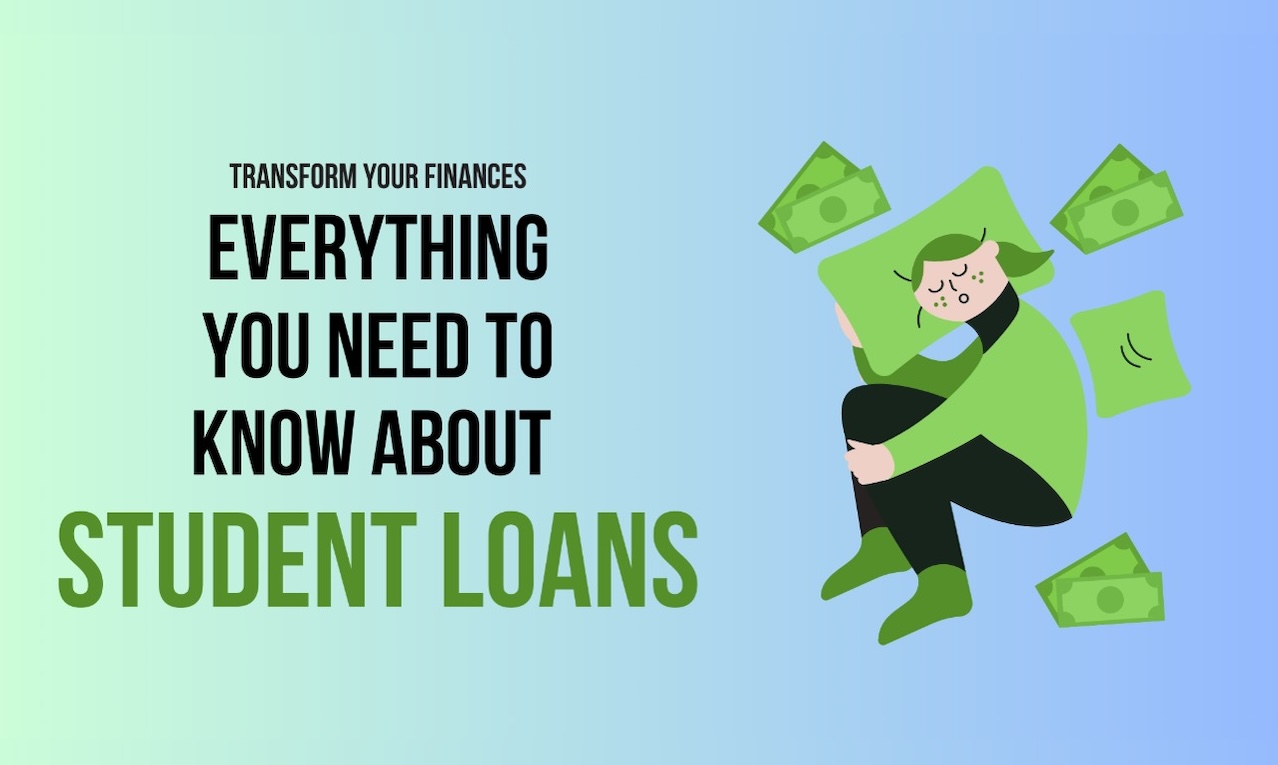What is a student loan? A comprehensive guide to loan types and smart repayment

So, you’re upbeat about taking that next step to fulfill all your ambitions and dreams by joining higher ed, preferably the school of your choice. The world is at your feet. All that remains now is to fund your studies, and by that, we imply student loans, scholarships, grants, etc.
The cost of college has dramatically increased over the years. According to the Education Data Initiative (EDI), currently, 43.5 million Americans have student loan debt, with the total federal loan debt hitting $1.645 trillion. The average year-on-year increase is about 1 million borrowers, which makes sense as costs rise and incomes plateau. The average undergraduate in a public university graduates with about $33,000 in student loans.
In this article, we’ll focus on the different types of student loans and how to obtain them. We’ll also cover how to be wise and cautious about these loans and more importantly, how to repay comfortably. To know everything about student life and to help not only with essay writing is the credo of Audrey Randall, a essay writer UK at the essay writing service RoyalWriter.co.uk.
Federal vs. Private Student Loans
For student borrowers, there are primarily two categories of loans to consider: federal and private loans. Each category is tailored to different borrower needs. Let’s delve into the key features of these loan types.
Federal Student Loans
Federal student loans are loans forwarded by the government through the U.S. Department of Education. There are three categories of Federal loans:
Direct Subsidized Loans: These are ideal for undergraduates with demonstrated financial need. They have an interest rate of 5.50% (2023-24) and typically offer a 10-year repayment term. Typically, repayments 6 months after graduation, and if deferred, interest is not charged or accumulated. Subsidized means that the government subsidizes the interest on the loan provided the student is enrolled in school for at least half of their tenure.
Direct Unsubsidized Loans: These loans are designed for undergraduates, graduates, and professional students who may not qualify for need-based aid. They have an interest rate of 5.50% for undergraduates and 7.05% for graduates (2023-24), with a standard 10-year repayment term. They are also available to students regardless of their financial need.
Direct Unsubsidized and Subsidized loans offer several advantages. They offer a low, fixed interest, negotiated repayment, and no need to pass a credit check. Students can also prepay their loans with no penalties. On the downside, students need to file a new FAFSA form each year, and there’s also a lower amount of funds made available.
Direct PLUS Loans: These loans target graduate or professional students and parents of dependent undergraduates. They come with an interest rate of 8.05% (2023-24) and typically offer a 10-year repayment term. The applicant also needs to pass a credit check and may also need to get a co-signer before approval.
Private Student Loans
For students from low-income families or those who are wary of borrowing very high amounts, Federal loans are the way to go. However, private lenders such as banks, credit unions, and online lenders often step in to fill the gap where students have exhausted their available options on Federal loans. Examples of these include Sallie Mae, SoFi, College Ave, and Discover Credit.
Unlike Federal loans, private loans have higher yearly interest rates (APR), usually between 4-20%. For undergraduates, a co-signer is usually required since the applicant must pass a credit check. For graduate and professional students, these loans often have reduced co-signer requirements, variable or fixed interest rates, and varying repayment terms determined by the lender.
Understanding Borrowing Limits
Each type of student loan comes with borrowing limits that determine the maximum amount you can secure. Federal loans like Direct Subsidized and Unsubsidized Loans allow undergraduates to borrow from $5,500 up to $12,500 annually, with higher limits for graduate and professional students. On the other hand, Direct PLUS Loans can cover remaining college costs beyond financial aid.
Choosing Between Federal vs. Private Student Loans
Federal student loans offer flexibility, low interest rates, and unique benefits. They come with various repayment options and longer deferment periods compared to private loans. Furthermore, federal loans open doors to loan forgiveness programs like the Public Service Loan Forgiveness program, and the recent SAVE program by the Biden administration.
Importantly Federal loans don’t require a minimum credit score, ensuring accessibility for many undergraduates without a co-signer.
Private student loans are more suitable when:
- Borrowers are ineligible for federal aid due to factors like citizenship status.
- Educational expenses exceed federal loan limits.
- Borrowers have excellent credit, potentially qualifying for lower interest rates from private lenders. One way to achieve a good credit limit is to work a part-time job as a student. For example, with great writing skills, you can work online at a company like Royalwriter.
Always ensure to research your options to get as much as possible from Federal loans before moving on to private lenders.
What’s the Best Way to Get Out of Student Debt Quickly?
Student debt is a debilitating financial aspect for millions of Americans. For any student borrowing funds whether Federal or private, getting out of student debt should remain a priority. Some strategies to consider include:
- Pay more than the minimum payment and cut back on your spending.
- Boost your income by taking up part-time jobs or side hustles, for example, becoming a part of essay writers for hire.
- Refinancing can lower your interest rate and improve payment terms but is best for private loans with high rates. Ensure that it doesn’t extend the repayment period.
- Income-Driven Repayment plans (IDRs) provide low monthly payments with potential forgiveness, but they prolong repayment. Opt for paying as much as possible each month to accelerate loan repayment.
- Don’t rely on student loan forgiveness. Forgiveness programs have strict requirements and low approval rates. They also depend on the administration in place.
Finally, make eliminating student loan debt a top financial priority. Being debt-free allows you to use your money for the life you truly want for yourself.
Wrapping Up
Student loans undoubtedly serve to give access to millions of students in the US who otherwise would be locked out of higher education. Understanding the different types of loans available and the strategies to borrow and more importantly repay is key for any successful borrower.
With this knowledge, you can make an informed decision on whether to go for Federal or private loans. You can also follow informed strategies on how to reduce your student loan debt quickly. Good luck!
The editorial unit

























Facebook
Twitter
Instagram
YouTube
RSS